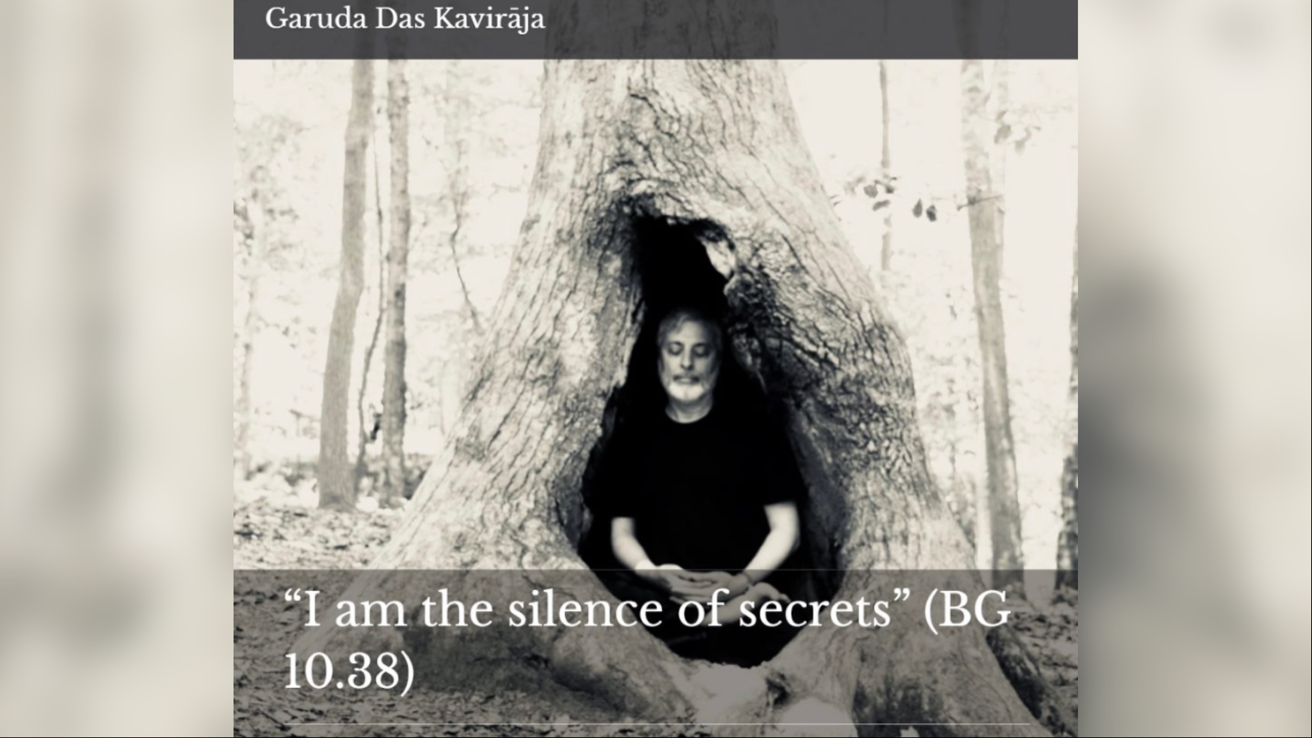“I am the silence of secrets” (BG 10.38)
By Garuda Das | Май 16, 2021

Every secret rests on a foundation or a frame of silence. In order for secretiveness to exist, there must be the larger context of silence. Just as a picture relies on a frame to declare it to be art, to declare its separateness from all else, so a secret must be surrounded by silence in order for it to even exist as a secret. Just as a musician establishes an arena of silence before he or she performs, so a clearly delineated realm of silence is first established in order for what is secret to be established as a secret.
The secret teaching that Arjuna receives was secret and disclosed to only him on the battlefield of Kurukṣetra. No one else there heard it or saw it. However, Sañjaya, the narrator, could see it, and the author, Vyāsa, could see it and hear of it from the narrator. And therefore the secret teaching of the Bhagavad Gītā is actually available to us, though it remains secret to most. Even to most who read the Bhagavad Gītā, ironically!
Secretiveness always involves something concealed, and something revealed. Here, a secret involves something spoken and the silence surrounding what is spoken. Without silence, what is spoken would not be possible. Here, silence functions as the essence of what is spoken. In the sense of mystery, all secrets are available through silence. And it is into that realm of silence that we all enter when we begin to meditate, a practice in which the secrets which have remained concealed for so long, which are meant for us, are then revealed.















